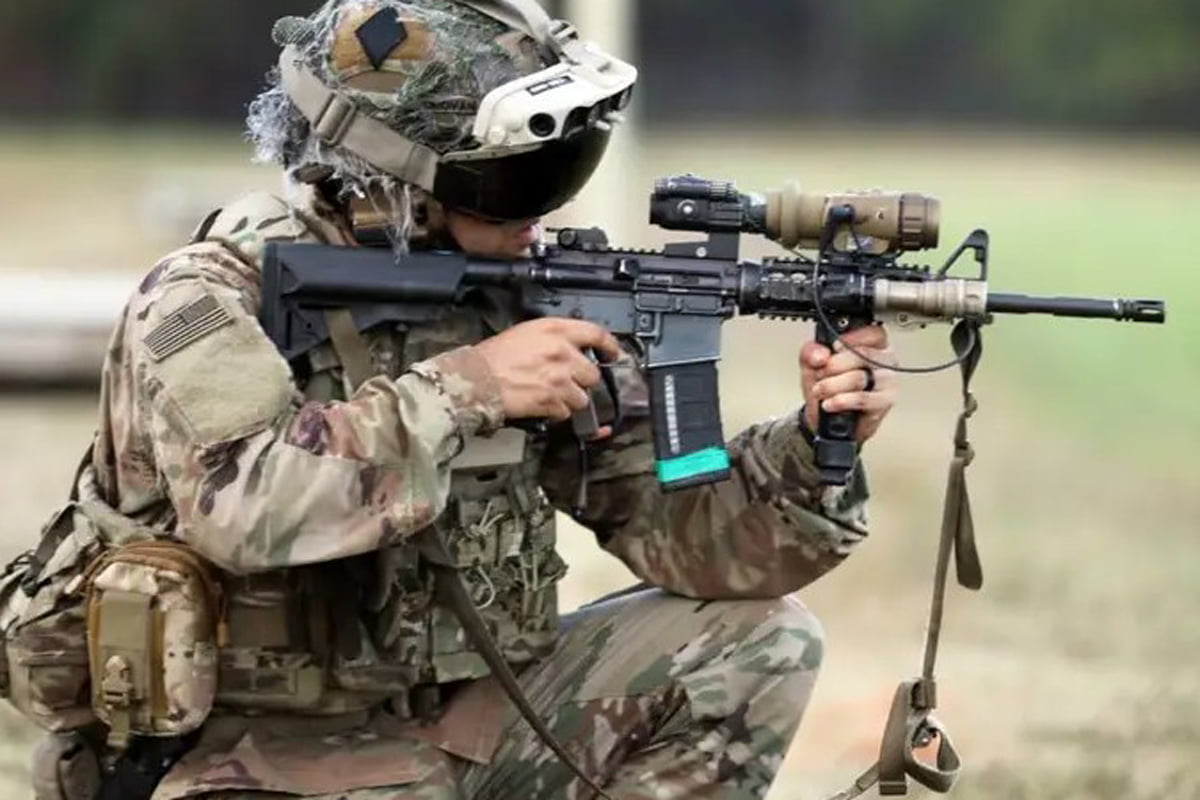US Congress halts $400 million order for Microsoft's combat Hololens

Microsoft's AR combat headset for the US Army remains a project with many hiccups.
If you thought Microsoft's military Hololens IVAS was out of the woods after the U.S. Army's recent order for 10,000 combat headsets, you were mistaken: The U.S. Congress has prohibited another order for 6,900 headsets worth $400 million for the current fiscal year.
Instead, the U.S. Army is to receive only 5,000 headsets for training purposes while Microsoft develops an improved version 1.2.
The headset versions shipped so far are 1.0 and 1.1, which have significant technical flaws, according to previous military reports. Soldiers reportedly suffered headaches, eye discomfort and nausea during tests that lasted less than three hours.
AR tech needs to get better
Instead of $400 million to ship more current headsets, lawmakers have only released $40 million for this fiscal year to develop an improved version of IVAS, Bloomberg reports.
The U.S. Army had already allocated $125 million for the development of a military Hololens 1.2 in late December. The money came from the previous year's budget.
The contract calls for improvements to deficiencies identified in previous test missions. The 1.2 version of the combat headset is supposed to offer a new form factor, a "lower profile heads-up display" and greater comfort, with better distributed weight and a new user interface.
In a previous report, one tester stated that IVAS "would have gotten us killed" because of the bright, highly visible display lights. IVAS 1.2 is also supposed to work more reliably and consume less power.
The Army continues to rely on Microsoft
"The Army is fully committed to IVAS and the leap-ahead capability it will provide for Soldiers to prevail on the battlefield," the U.S. Army writes. The "incremental fielding" of IVAS is scheduled to begin in September 2023.
Theoretically, Microsoft could deliver 120,000 headsets worth $22 billion to the U.S. Army over the next ten years - assuming the company can still get a handle on the complex augmented reality technology. The IVAS project has been running since 2018 and is intended to offer U.S. soldiers audiovisual superpowers like those in a computer game. They can see friends and enemies through walls, for example, or have automatic aiming assistance.
Microsoft did not comment on the news. The Redmond company is also keeping a low profile when it comes to the commercial version of the Hololens. Recently, Microsoft's XR boss made a hint that Microsoft is still working on Hololens and that an update could appear, but without being specific.
Note: Links to online stores in articles can be so-called affiliate links. If you buy through this link, MIXED receives a commission from the provider. For you the price does not change.